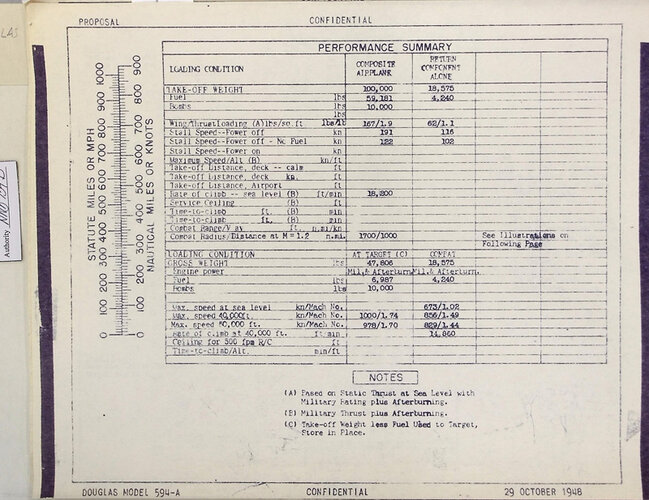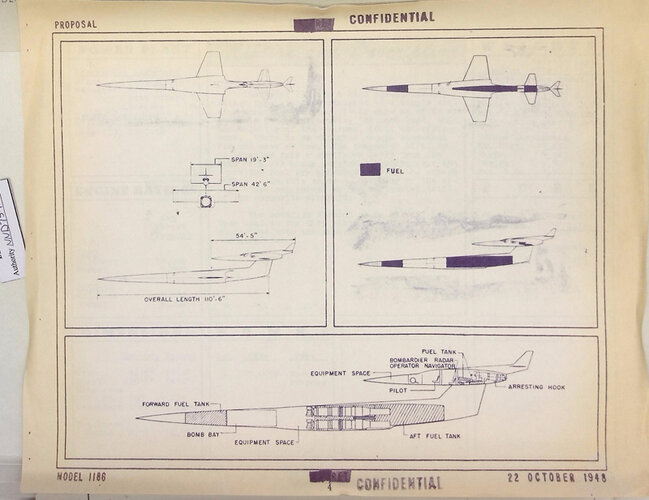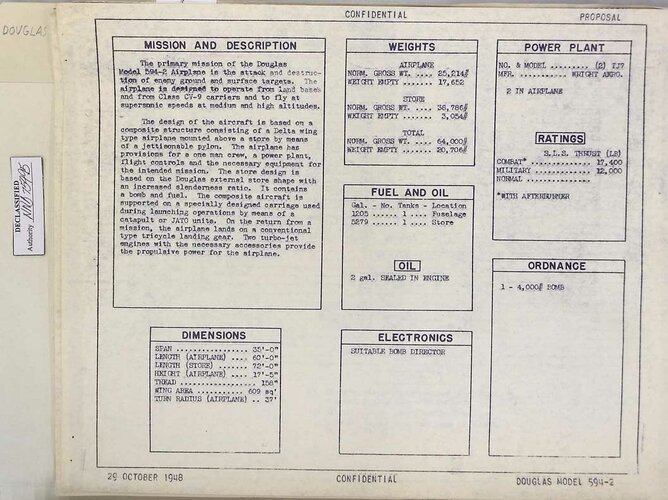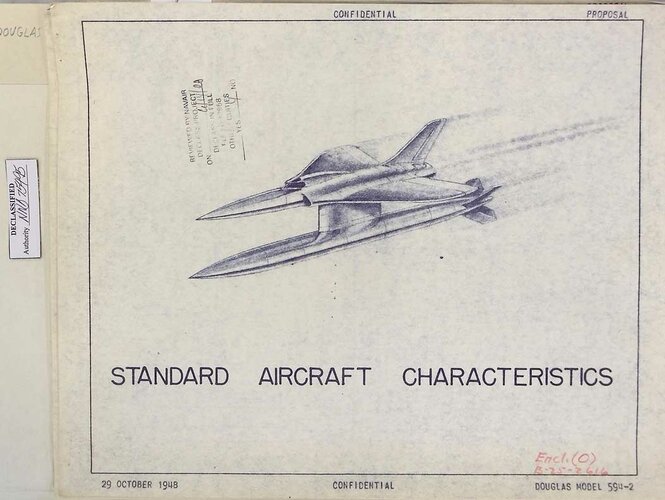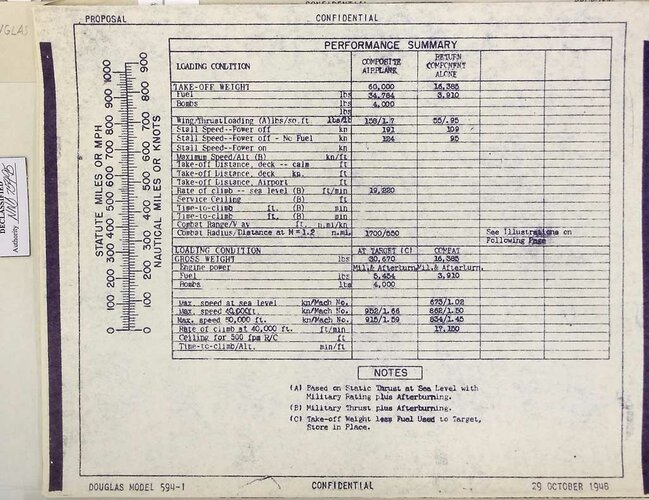_Del_
I really should change my personal text... Or not.
- Joined
- 4 January 2012
- Messages
- 1,315
- Reaction score
- 1,808
Tailspin Turtle said:The Navy evaluation stated that the bicycle gear was "probably satisfactory for field landings but is an unknown quantity for carrier work". My impression is that there was no particular difficulty landing either the B-47 or the B-52. The U-2, of course, is notoriously difficult to land.
The B-47 was notorious for porpoising if both mains did not contact at the same time, like the U-2. B-52 porpoises, too, but is much more forgiving. Still you can see many B-52 videos with a pretty good bounce or two at landing. Making contact with both mains at the same time on a pitching deck might be problematic. Porpoising over the wire might be a potential disaster. Not sure what the spool up time is on a J40, but turning a porpoise into a go around on a flightdeck might be pretty hazardous if you miss the wire. Porpoising beyond or onto the front edge of the deck is likely a bad day, too. Those things might have played a role in the official skepticism, I don't know.
Early advice in the -47 was to deploy the ribbon chute (not to be confused with the smaller drogue frequently used on approach) when porpoising, even if you were not in contact with the ground at the time. The trucks could take a lot of abuse, and ending the oscillation was more important than potentially blowing a tire. Eventually guys just deployed the ribbon chute immediately prior to touch down.
I tend to agree that arresting gear probably quiets the porpoising problem quickly. It could very well work, but I can see why they might be cautious.




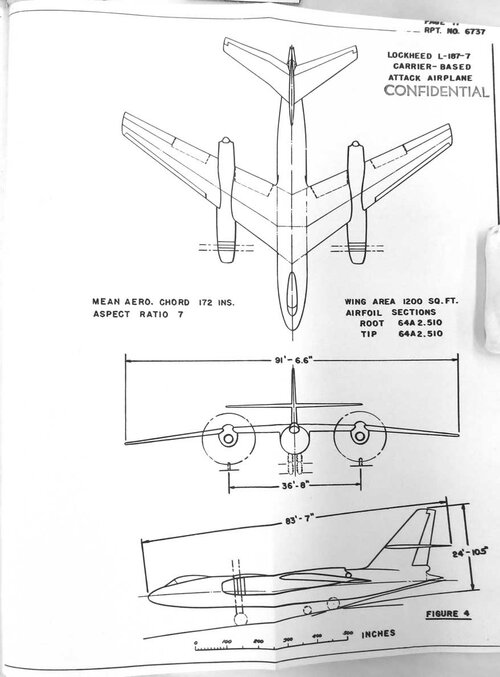


![L-187-7-Powerplant-3-Allison-503-[XT-44A]-Stack.jpg](/data/attachments/231/231637-c3858c1030b867bb5ee61c87865ac6d1.jpg)
![Convair-Special-Attack-VA-Long-Range-Fighter-Pod-[SD48-39301].jpg](/data/attachments/231/231767-eac4f78a315d423454dff85db3511cad.jpg)



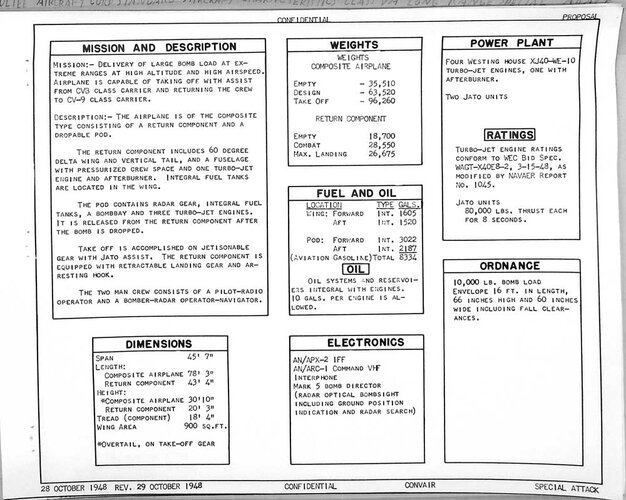
![Convair-Special-Attack-VA-Long-Range-Model-[M10424]A-adj.jpg](/data/attachments/238/238956-f8c62aa01dbc64f2f3fa4d3d9365d17b.jpg)
![Convair-Special-Attack-VA-Long-Range-Model-[M10432]A-adj.jpg](/data/attachments/238/238957-9f0502e057241f7eef04b01acb369ec3.jpg)



